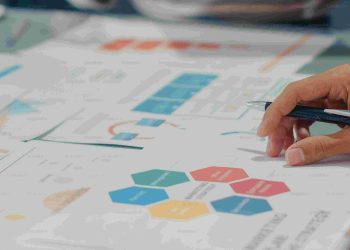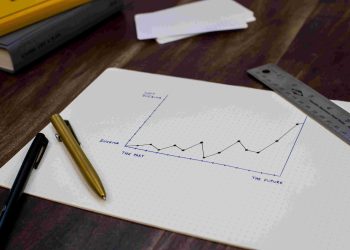Trend Rating Analysis Tools
The world has always been captivated by trends—but until recently, tracking them has often felt like grasping at smoke.
With the acceleration of digital communication and the emergence of advanced data analytics, trend rating analysis tools have become indispensable in understanding not just where the world is heading, but how we can shape it.

A Personal Journey: From Instinct to Insight
Years ago, as a young entrepreneur navigating the chaotic waters of a rapidly evolving industry, I relied mostly on intuition when it came to following trends. I would browse articles, talk to peers, and observe shifts in my surroundings, yet I constantly wondered: Was I missing something bigger? Those days were punctuated by moments of sharp clarity, but also by blind spots that cost me opportunities.
Fast forward to today, and the dynamic has changed completely. Now, I rely on tools—powerful systems that sift through oceans of data, identify patterns, and deliver actionable insights. But those tools are not just technological marvels—they reflect a seismic shift in how we approach knowledge itself.
Decoding Trends: The Intersection of Art and Science
Trend analysis is not merely a function of technology; it’s a deeply human endeavor shaped by our psychology and innate curiosity. At its core, trend identification operates within the tension between two disciplines: sociology, the study of group behavior, and mathematics, the language of patterns.
Consider this: Trends are akin to ocean waves. Some are large, defining eras and shaping industries, while others are ripple-sized, fleeting in their influence. Trend rating analysis tools act as sonar, helping us map these waves before they reach the shore. They analyze vast quantities of data across platforms, from news articles to social media, and score trends based on factors like relevance, longevity, and momentum.
Conventional Wisdom Misunderstood
There’s a pervasive misconception that trend analysis is purely reactive—an effort to jump on the bandwagon before it’s too late. But in truth, the discipline thrives at the nexus of prediction and innovation. Using advanced tools, we no longer need to simply follow trends; we can forge them ourselves by identifying emerging signals before they crystalize into mainstream movements.
Conventional wisdom might tell us to play it safe, to follow established norms, but history tells a different story. Think of Elon Musk, targeting space exploration when it seemed no longer fashionable, or Greta Thunberg, bringing climate change to the forefront when the conversation had grown stagnant. Both challenged dominant paradigms by understanding and leveraging deep societal currents.
Emerging Technologies: The Future of Trend Analysis
The tools of today are laying the groundwork for a future of unimaginable precision. Emerging technologies like machine learning, AI-driven sentiment analysis, and natural language processing are turning raw data into veritable crystal balls. For instance, platforms like NetBase Quid and Brandwatch allow organizations to delve into conversation trends in real-time, distilling global sentiment into localized insights.
But these tools are not without their challenges. Bias in data collection and analysis can skew results, reinforcing existing structures rather than offering new perspectives. To truly unlock the potential of trend analysis, developers must strive for transparency and guard against algorithmic blind spots.
The Philosophy Beneath the Methodology
Trend rating analysis isn’t just about tools—it’s a mindset. Drawing links between technological disruption and human narrative forces us to ask not just what trends are rising, but why. Here’s where philosophy intersects the field: Every trend, no matter how ephemeral, reflects deeper societal truths.
Take, for instance, the rise of minimalist aesthetics over the past decade. On the surface, it’s a reaction to visual clutter—but on a deeper level, it’s an expression of a generation’s craving for simplicity in an over-saturated consumer culture. Trend analysis, when done right, goes beyond surface-level forecasts to explore the values and anxieties shaping tomorrow.
Steps You Can Take Today
The technological tools may be complex, but harnessing them doesn’t have to be. Here are five actionable steps to start integrating trend analysis into your workflow:
- Start with Clear Objectives:
Define what you want to achieve with trend analysis, whether it’s identifying emerging market opportunities or refining a marketing campaign. - Utilize Free Tools:
Leverage platforms like Google Trends, Pinterest Predicts, and Twitter Analytics to get a snapshot of current conversations. - Invest in Scalable Solutions:
For deeper insights, consider tools like Meltwater or Crayon, which offer monitoring across industries and geographies. - Continuously Educate Yourself:
Enroll in online courses focused on data analysis or AI applications to deepen your understanding of the field. - Engage in Interdisciplinary Thinking:
Don’t confine trend analysis to marketing or sales. Apply it to HR, product development, or even personal growth questions to unlock its true potential.
A Call to Action
As the pace of change accelerates, understanding and leveraging trends is no longer a luxury—it’s a necessity. But tools alone won’t carry us forward. It’s our curiosity, our willingness to challenge norms, and our drive to adapt that will separate the leaders from the followers. The future belongs not to those who react to trends, but to those who shape them. So, ask yourself: How will you become an active participant in the flow of today’s ideas?










